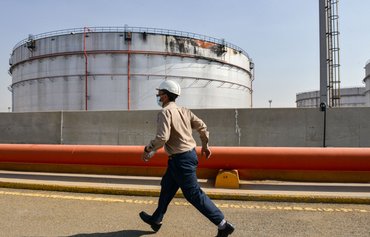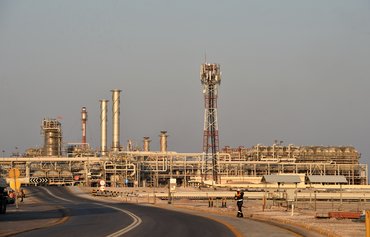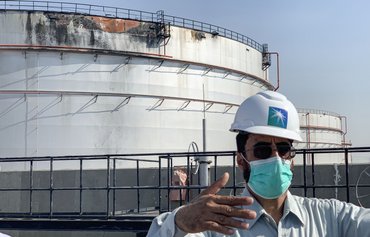A missile and drone attack targeted the heart of Saudi Arabia's oil industry on Sunday (March 7) in an assault claimed by the Iran-backed Houthis (Ansarallah), a new escalation in the six-year conflict.
The attack on energy giant Saudi Aramco's facilities came as the Saudi-led military coalition bombed Yemen's Houthi-controlled Sanaa after intercepting a separate flurry of cross-border Houthi drones and missiles.
The Houthis claimed on Twitter they had fired drones and missiles at Ras Tanura, one of the world's biggest oil ports, and military targets in the eastern area of Dammam, as well as in southern provinces near the Yemeni border.
The Saudi defence ministry said it had intercepted a drone targeting a petroleum storage yard at Ras Tanura and a ballistic missile targeting Aramco facilities in the eastern city of Dhahran.
![Smoke billows during clashes between forces loyal to Yemen's Saudi-backed government and the Iran-backed Houthis in Yemen's northeastern province of Marib on March 5. [AFP]](/cnmi_am/images/2021/03/08/28774-yemen-marib-fighting-600_384.jpg)
Smoke billows during clashes between forces loyal to Yemen's Saudi-backed government and the Iran-backed Houthis in Yemen's northeastern province of Marib on March 5. [AFP]
Shrapnel from the missile fell close to an Aramco residential compound in the city, which is home to thousands of company employees and their families, the energy ministry said.
The attacks did not result in any casualties or damage, it added, without specifying who was behind them.
The kingdom's oil-rich eastern region is home to most of Aramco's production and export facilities.
The defence ministry said the attacks targeted "the backbone of the world economy, oil supplies and global energy security".
The Houthis claimed two missile strikes on a Saudi Aramco plant in Jeddah, one on March 4 and the second on November 24.
In September 2019, attacks on the Abqaiq processing plant and Khurais oilfield temporarily halved the kingdom's crude output and caused turmoil in global energy markets. The US and Saudi Arabia held Iran responsible for those attacks.
'Red line'
On Sunday morning, the coalition pummeled Sanaa with air strikes, triggering huge explosions that sent plumes of smoke rising in the sky, according to AFP correspondents on the ground.
"The military operation targets Houthi military capabilities in Sanaa and a number of other provinces," the coalition said in a statement on Saudi state media.
That came after the coalition said it had intercepted a total of 12 drones and two ballistic missiles launched by the Houthis, in a sharp uptick in cross-border attacks on the kingdom.
The coalition said the drones were aimed at "civilian" targets in Saudi Arabia, SPA reported, without specifying the locations.
The two intercepted missiles targeted the southern city of Jizan, the coalition added, without stating whether there were any casualties or damage.
The Houthis have stepped up attacks on Saudi Arabia in recent weeks, as well as escalating an offensive closer to home, to seize the Yemeni government's last northern stronghold of Marib.
In a statement after its strikes, the coalition said that targeting civilians in the kingdom was a "red line", adding that the Houthis' actions "will not lead to an imposition of a political settlement".
On Saturday, Yemeni government sources said fierce fighting between pro-government forces and the Houthis in oil-rich Marib had killed at least 90 fighters on both sides over 24 hours.

![This picture taken on November 24, 2020 shows a view of the Saudi Aramco oil facility in Saudi Arabia's Red Sea city of Jeddah. The site has been a frequent target of Houthi attacks. [Fayez Nureldine/AFP]](/cnmi_am/images/2021/03/08/28772-saudi-aramco-oil-600_384.jpg)






